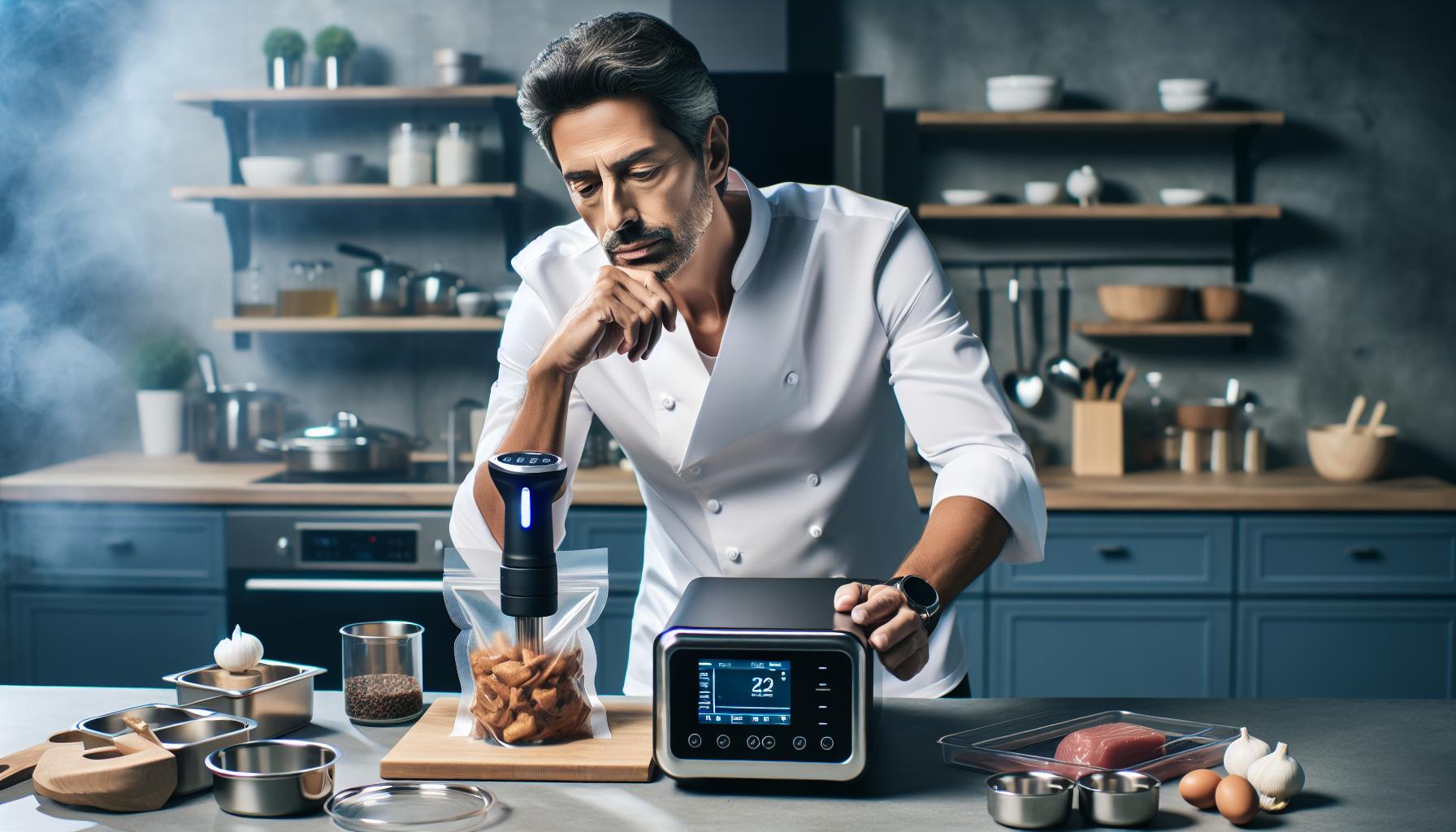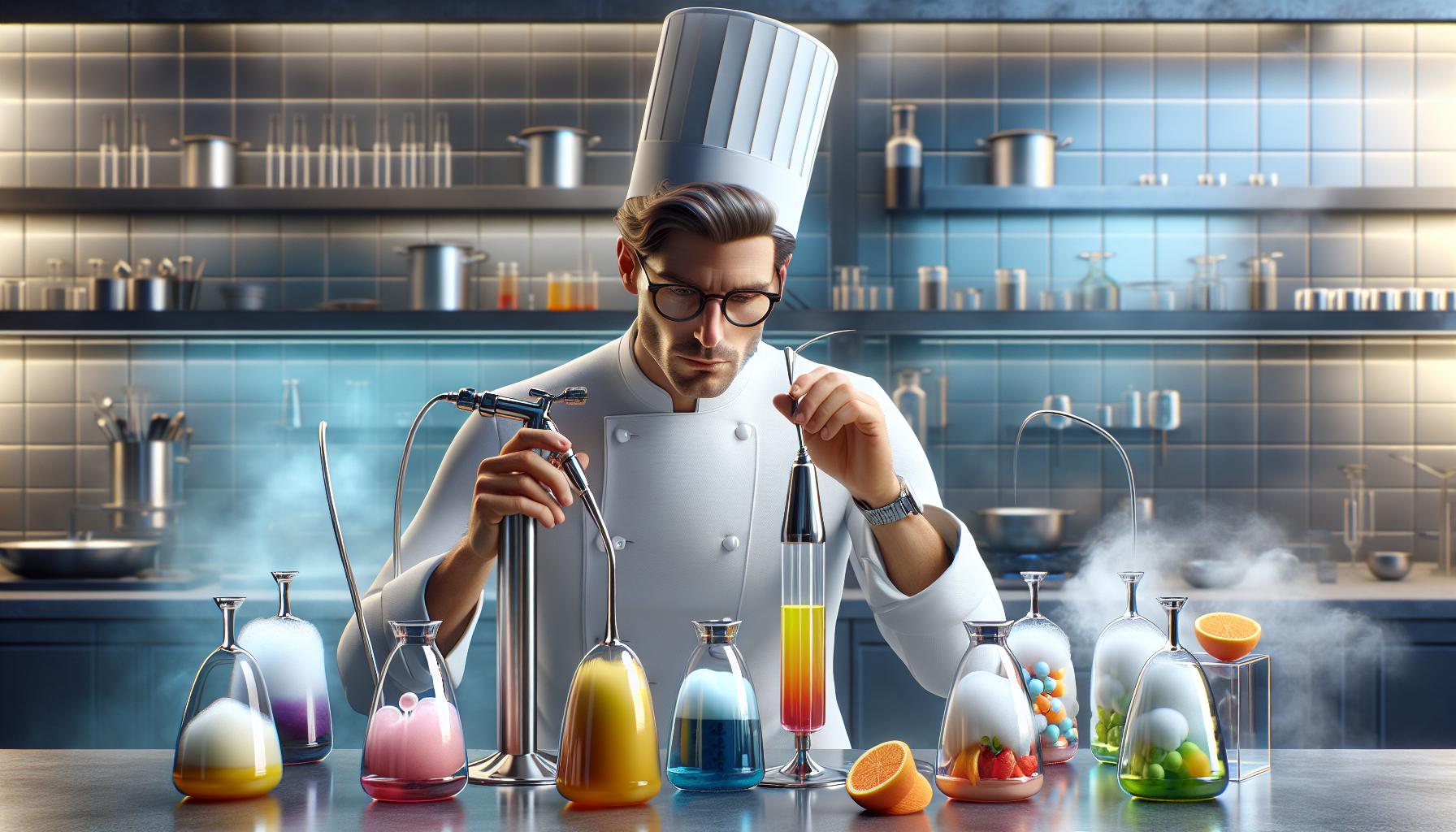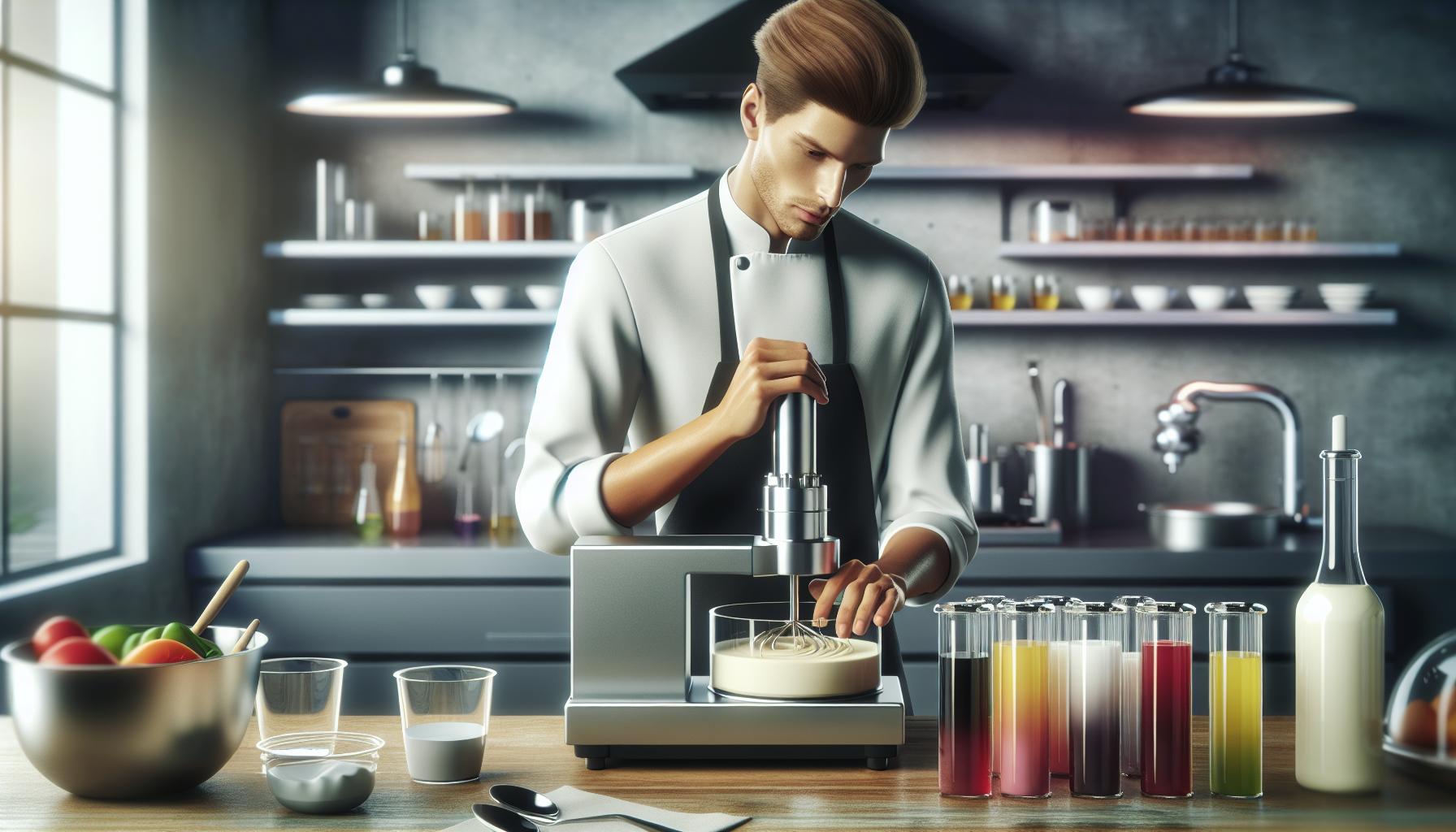Molecular gastronomy isn’t just about turning dinner into a science experiment – it’s the art of transforming ordinary ingredients into extraordinary culinary masterpieces. This fascinating blend of science and cooking has revolutionized how chefs approach food preparation while creating unforgettable dining experiences.
From spherification to sous vide cooking these innovative gastronomy cooking techniques have taken the culinary world by storm. Modern chefs are pushing boundaries by using liquid nitrogen foams gels and edible films to create dishes that challenge both perception and taste. They’re not just cooking food – they’re crafting multisensory experiences that delight surprise and inspire diners around the globe.
Gastronomy Cooking Techniques
Molecular gastronomy transforms traditional cooking through scientific principles and innovative gastronomy cooking techniques. This culinary discipline combines chemistry, physics and food science to create unique textures, flavors and presentations.
Scientific Principles Behind Modern Cooking
Chemical reactions form the foundation of molecular gastronomy transformations. The process of spherification uses sodium alginate and calcium chloride to create liquid-filled spheres that burst in the mouth. Protein denaturation enables precise temperature control in sous vide cooking, ensuring optimal texture and doneness. Emulsification gastronomy cooking techniques combine immiscible liquids like oil and water to create stable foams and mousses. The Maillard reaction produces complex flavors through amino acid and sugar interactions at specific temperatures. Gelation processes utilize hydrocolloids like agar-agar and carrageenan to modify food textures.
- Liquid nitrogen containers for rapid freezing
- Immersion circulators for temperature control
- Dehydrators for creating crispy textures
- pH meters for monitoring acidity levels
- Ultrasonic homogenizers for emulsification
- Rotary evaporators for distillation
Temperature Control Methods

Temperature precision creates distinct textures flavors in modern gastronomy. Advanced heating cooling methods enable chefs to achieve consistent results while preserving food quality.
Sous Vide Cooking
Sous vide cooking transforms ingredients through precise temperature control in vacuum-sealed bags. The method maintains temperatures within 0.1°F accuracy using water circulation systems. Food cooks evenly in its own juices at temperatures between 131°F-185°F for specific time periods based on thickness density. Proteins develop tender textures as collagen breaks down gradually at lower temperatures. This technique preserves nutrients vitamins that traditional high-heat cooking methods typically destroy. Restaurant kitchens use programmable immersion circulators to maintain exact temperatures for multiple portions simultaneously.
Flash Freezing Techniques
Flash freezing revolutionizes texture preservation through rapid temperature reduction below -320°F using liquid nitrogen. The instantaneous freezing forms microscopic ice crystals that prevent cellular damage in delicate ingredients. Chefs create frozen mousses sorbets that maintain smooth textures without traditional ice crystal formation. This technique produces unique dining experiences such as frozen herbs that shatter into powder dragon’s breath desserts that emit vapor clouds. Commercial kitchens utilize specialized equipment including cryogenic freezers blast chillers to achieve precise temperature drops within seconds.
Texture Transformation Techniques

Texture transformation techniques revolutionize traditional ingredients into innovative culinary experiences through precise chemical reactions and physical processes. These methods create unique mouthfeels and unexpected dining experiences by manipulating food structures at a molecular level.
Spherification Process
Spherification transforms liquids into sphere-shaped morsels with thin membranes containing flavorful liquid centers. The process combines sodium alginate with calcium chloride to create an instant gel reaction on contact. Basic spherification produces caviar-like spheres using flavored liquids mixed with sodium alginate dropped into a calcium bath. Reverse spherification creates larger spheres by dropping calcium-enriched liquid into an alginate bath, resulting in ravioli-like shapes. Professional chefs use precise measurements: 0.5% sodium alginate solution for basic spherification and 2.5% calcium lactate for reverse spherification. This technique creates signature dishes like olive oil caviar and liquid pea ravioli.
Foam and Air Creation
Culinary foams transform liquid ingredients into light aerated textures using stabilizing agents and specialized equipment. Soy lecithin (0.3-0.5% concentration) creates stable foams by capturing air bubbles within liquid solutions. Hand blenders equipped with micro-perforated attachments incorporate air at 15,000-20,000 RPM to generate fine, consistent bubbles. Modern techniques include using nitrous oxide charges in siphons at 2-3 bar pressure for instant foams. Popular applications include carrot air, chocolate mousse clouds and citrus espumas. The resulting foams maintain stability for 15-30 minutes on plated dishes.
Gel Formation Methods
Gel formation utilizes hydrocolloids to create unique textures ranging from soft gels to firm custards. Agar agar sets at 95°F and remains stable until 185°F, creating firm, clean-cutting gels at 0.2-2% concentration. Gellan gum produces different textures: low acyl forms create firm, brittle gels (0.1-0.3%), while high acyl creates soft, elastic gels (0.4-0.7%). Carrageenan types create varying textures: kappa forms firm gels at 0.2-0.8%, iota creates soft gels at 0.3-0.5%. These agents transform liquids into garnishes, layered terrines and three-dimensional shapes.
Chemical Reactions in Gastronomy

Chemical reactions form the foundation of modern gastronomy techniques, transforming ingredients at a molecular level to create innovative textures, flavors, and presentations.
Emulsification Techniques
Emulsification combines two immiscible liquids by dispersing tiny droplets of one liquid throughout another. Lecithin acts as an emulsifier to stabilize mixtures like mayonnaise, hollandaise sauce and culinary foams. Professional chefs use high-speed homogenizers to create stable emulsions with droplet sizes under 100 micrometers. Advanced techniques include:
- Hot emulsification at 140°F for butter sauces
- Cold emulsification at 40°F for vinaigrettes
- Ultrasonic emulsification for transparent emulsions
- Protein-based emulsions using egg yolks
- Hydrocolloid emulsifiers like xanthan gum
Dehydration and Powdering
Dehydration removes moisture from ingredients while concentrating flavors and creating unique textures. Modern gastronomy utilizes specialized equipment like freeze dryers and dehydrators operating at precise temperatures between 95-155°F. Common applications include:
- Maltodextrin powders from high-fat liquids
- Vacuum-dried fruit crisps at 95°F
- Freeze-dried herbs at -40°F
- Microwave-dried vegetable powders
- Tapioca maltodextrin for fat encapsulation
Temperature and humidity control during dehydration preserves volatile compounds responsible for aroma and taste. Advanced gastronomy cooking techniques incorporate pulse vacuum dehydration and ultrasonic assisted drying to maintain ingredient integrity.
Plating and Presentation Skills
Culinary plating transforms dishes into visual masterpieces through deliberate composition gastronomy cooking techniques. Modern gastronomy emphasizes the visual impact of food presentation alongside taste elements.
Artistic Expression Through Food
Professional chefs create visual narratives through strategic food placement gastronomy cooking techniques. Color coordination plays a vital role in plating, with complementary hues enhancing visual appeal. The rule of thirds guides ingredient placement, creating focal points at key intersections on the plate. Negative space functions as a frame, drawing attention to carefully arranged elements. Textural contrasts add depth through combinations like crispy garnishes atop smooth purees. Height variations create dimension using techniques such as stacking components or incorporating vertical elements like tuiles. Sauces appear as precise dots, swooshes or geometric patterns using specific plating techniques.
| Tool | Primary Use |
|---|---|
| Microspatulas | Precise ingredient placement |
| Culinary pipettes | Controlled liquid application |
| Herb scissors | Clean garnish cutting |
| Sauce brushes | Artistic sauce spreading |
| Stencils | Powder pattern creation |
Contemporary Cooking Applications
Modern gastronomy techniques transform both professional kitchens and home cooking environments through innovative applications of scientific principles. These techniques create unique dining experiences while maintaining efficiency and precision in food preparation.
Restaurant Industry Implementation
High-end restaurants integrate molecular gastronomy techniques through specialized equipment zones dedicated to specific processes. Professional kitchens feature designated areas for sous vide stations equipped with multiple immersion circulators maintaining precise temperatures between 130°F to 185°F. Nitrogen storage units enable flash-freezing applications for instant ice creams tableside presentations. Restaurants utilize vacuum sealers for compressed fruits vegetables maintaining 99% seal integrity. Digital pH meters ensure exact measurements for spherification processes requiring 4.0 to 7.0 pH levels. Specialized ventilation systems handle liquid nitrogen vapor dispersion maintaining safety protocols. Commercial kitchens incorporate temperature-controlled stations for gelation processes requiring consistent 140°F environments.
Home Kitchen Adaptations
Home cooks incorporate simplified versions of professional techniques using accessible equipment. Countertop sous vide devices offer temperature control within 0.5°F accuracy for precise cooking. Silicone molds enable basic spherification experiments creating caviar-sized pearls. Hand blenders with variable speeds create stable foams emulsions using common ingredients like egg whites lecithin. Food dehydrators operating at 95°F to 155°F concentrate flavors create unique textures. Digital thermometers accurate to 0.1°F ensure proper temperature control during molecular processes. Agar agar carrageenan serve as alternatives to professional hydrocolloids forming gels at home. Small-batch vacuum sealers preserve ingredients enhance compression techniques.
Intersection of Science and Culinary Innovation
Modern gastronomy stands at the intersection of science art and culinary innovation. These revolutionary techniques have transformed traditional cooking into an experimental playground where chefs can push creative boundaries and delight diners’ senses in unprecedented ways.
The fusion of scientific principles with artistic expression has opened new possibilities in both professional and home kitchens. From sophisticated molecular transformations to precise temperature control methods aspiring chefs now have the tools to create extraordinary culinary experiences.
As these techniques continue to evolve the future of cooking promises even more exciting innovations making gastronomy an ever-expanding frontier of culinary excellence.

